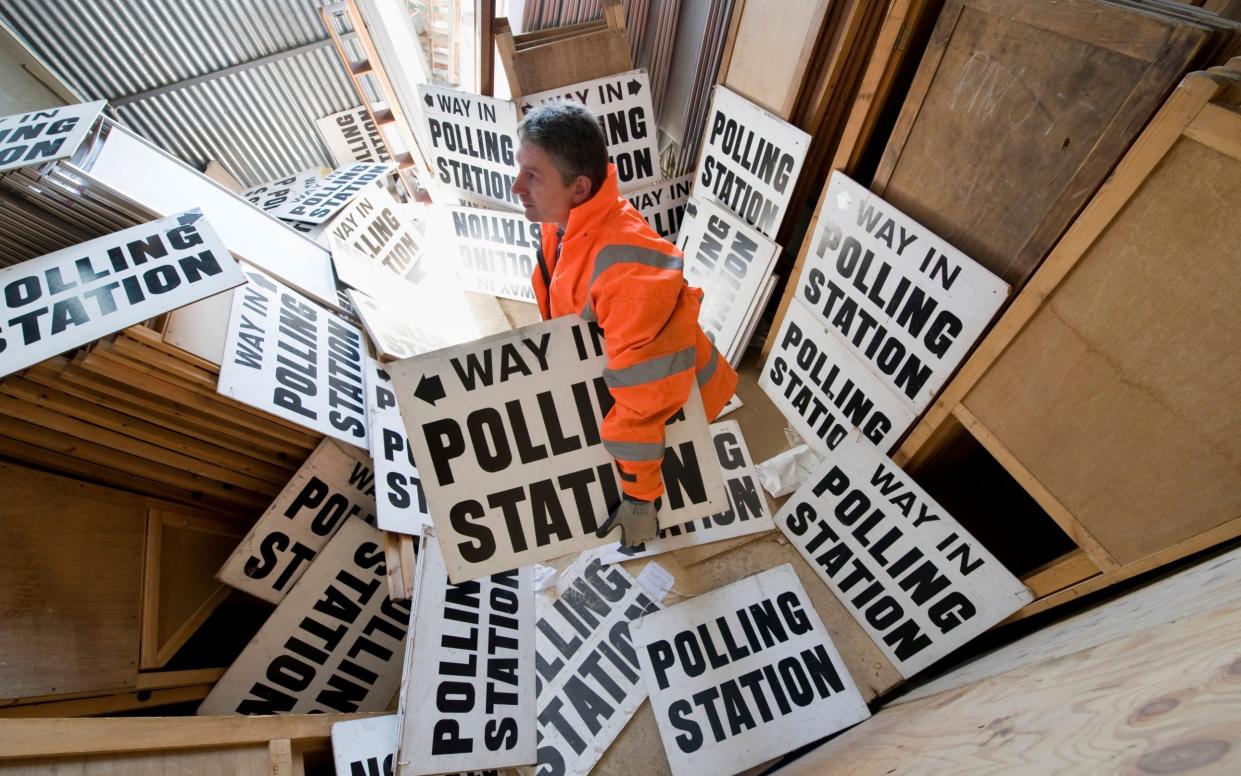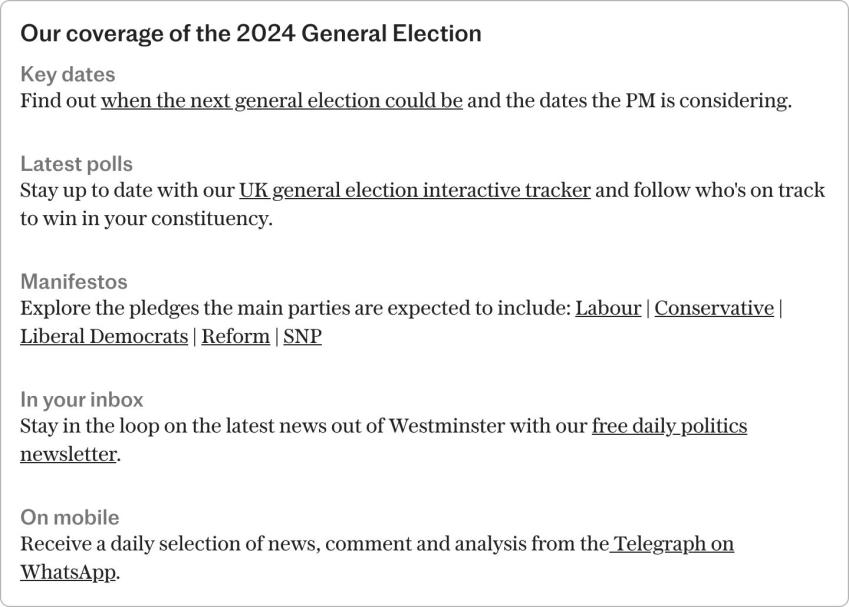Middle Britons – the political tribe who will decide the election

“Middle Britons” with no political affiliation are likely to decide the outcome of the election by swinging the result in marginal constituencies, research suggests.
According to analysis by the National Centre for Social Research (NatCen), middle Britons will be the most important of six political “tribes” on July 4 because they dominate two-thirds of the marginal seats being fought over by the Conservatives and Labour.
Earlier this year, Prof Sir John Curtice and Lovisa Moller, NatCen’s director of analysis, led a team to categorise the British electorate into six groups based on the British social attitudes survey.
Middle Britons describes a group of people mostly sitting in the middle ground when it comes to their views across a range of issues.
Left-wing narratives
According to NatCen, people with a middle-Briton opinion profile express mild agreement with Left-wing narratives, are divided in their attitudes towards tax-and-spend policies, largely neutral on equal opportunities and agree on the need to be tough on crime.
Critically, people in the group do not see themselves as a supporter of any particular party.
NatCen’s research shows that this opinion profile dominates marginal seats contested between the Conservatives and Labour in 2019, and also represents an important segment of support for Reform UK, the Scottish National Party and the Liberal Democrats.
In the 90 English and Welsh seats where Labour would have been the runner-up to the Tories in 2019, with a gap of less than 20 per cent of the votes, about two-thirds have middle Britons as the dominant voter segment.
This includes “red wall” seats such as Ashfield, Bishop Auckland and Bolsover, as well new seats created by boundary changes for the 2024 election that would have been won with a narrow margin in 2019, including Birmingham Northfield, Leeds South West and Morley, and North Norfolk.
Key voters for most parties
Middle Britons are also the second-most important voter segment for most parties.
Interviews by NatCen before the election campaign began found that the Tories, Labour, Reform, the SNP and the Lib Dems all had middle Britons as their second-most important supporter base, making up between 22 per cent and 28 per cent of each party’s estimated support at the time.
NatCen published the briefing to coincide with a new data release which will allow people to look up the demographic profile of each constituency in England and Wales, including which of the six voter types most dominate in that seat.
As well as middle Britons, the other groups are: well-off traditionalists, apolitical centrists, left-behind patriots, urban progressives and soft-Left liberals.
The Tories derive the biggest source of their support from well-off traditionalists, who make up 38 per cent of their supporter base.
For Labour, the Green Party and the SNP, urban progressives are the biggest segment among their voters, making up 28 per cent, 37 per cent and 35 per cent of their respective support bases.
‘Left-behind patriots’
Soft-Left liberals are the number one segment for the Lib Dems (32 per cent) and left-behind patriots are the lead group for Reform (33 per cent).
Ms Moller said: “We hope these tools will enable political commentators and others to assess the voter coalitions that parties are seeking to appeal to, and how this might shape their campaigning.
“It will also, post election, give us a sense of how people voted, and insight into the range of opinion profiles that any winning party or parties will need to take into account once in power.”


 Yahoo News
Yahoo News 
